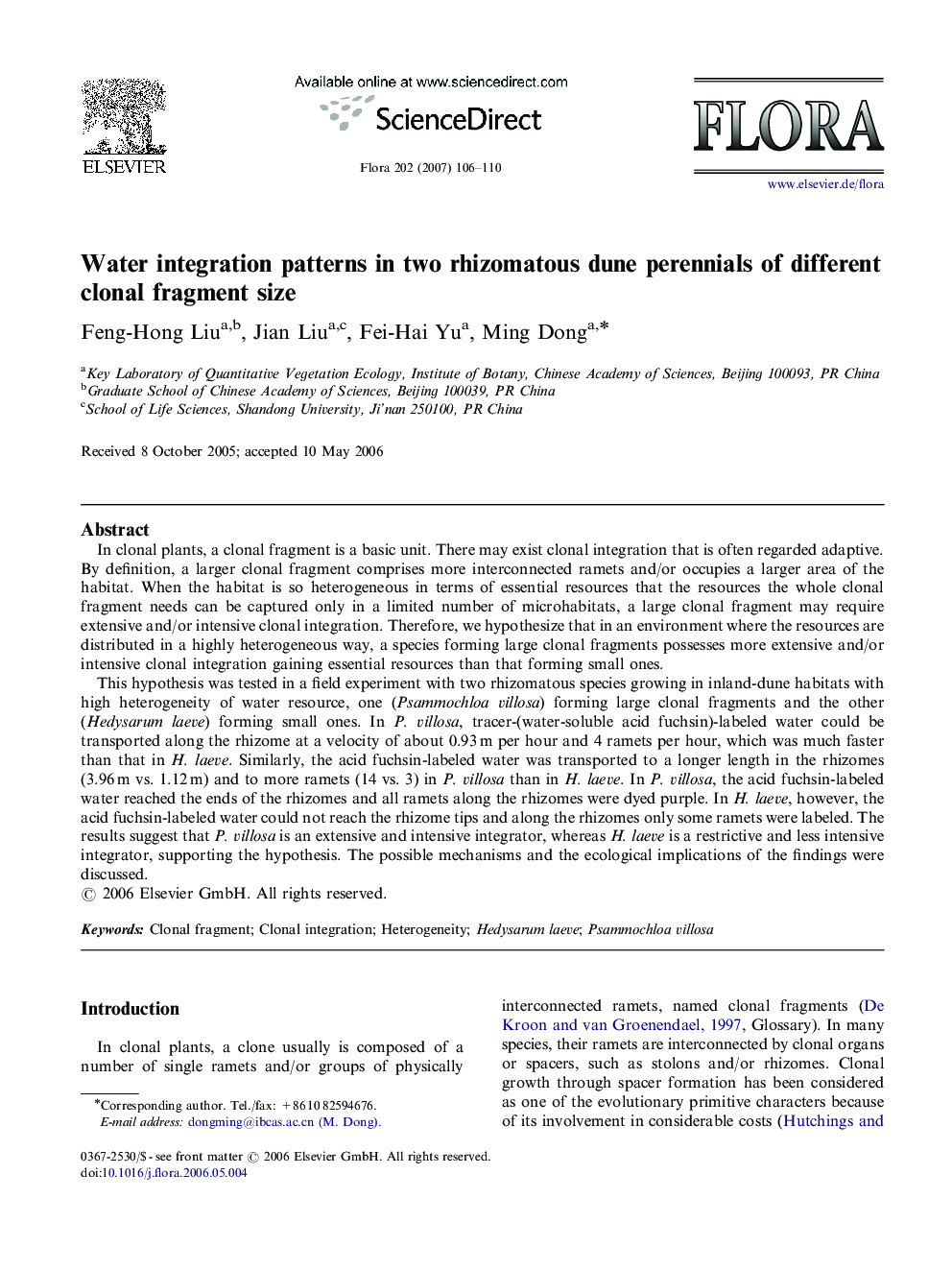| کد مقاله | کد نشریه | سال انتشار | مقاله انگلیسی | نسخه تمام متن |
|---|---|---|---|---|
| 2180172 | 1095115 | 2007 | 5 صفحه PDF | دانلود رایگان |

In clonal plants, a clonal fragment is a basic unit. There may exist clonal integration that is often regarded adaptive. By definition, a larger clonal fragment comprises more interconnected ramets and/or occupies a larger area of the habitat. When the habitat is so heterogeneous in terms of essential resources that the resources the whole clonal fragment needs can be captured only in a limited number of microhabitats, a large clonal fragment may require extensive and/or intensive clonal integration. Therefore, we hypothesize that in an environment where the resources are distributed in a highly heterogeneous way, a species forming large clonal fragments possesses more extensive and/or intensive clonal integration gaining essential resources than that forming small ones.This hypothesis was tested in a field experiment with two rhizomatous species growing in inland-dune habitats with high heterogeneity of water resource, one (Psammochloa villosa) forming large clonal fragments and the other (Hedysarum laeve) forming small ones. In P. villosa, tracer-(water-soluble acid fuchsin)-labeled water could be transported along the rhizome at a velocity of about 0.93 m per hour and 4 ramets per hour, which was much faster than that in H. laeve. Similarly, the acid fuchsin-labeled water was transported to a longer length in the rhizomes (3.96 m vs. 1.12 m) and to more ramets (14 vs. 3) in P. villosa than in H. laeve. In P. villosa, the acid fuchsin-labeled water reached the ends of the rhizomes and all ramets along the rhizomes were dyed purple. In H. laeve, however, the acid fuchsin-labeled water could not reach the rhizome tips and along the rhizomes only some ramets were labeled. The results suggest that P. villosa is an extensive and intensive integrator, whereas H. laeve is a restrictive and less intensive integrator, supporting the hypothesis. The possible mechanisms and the ecological implications of the findings were discussed.
Journal: Flora - Morphology, Distribution, Functional Ecology of Plants - Volume 202, Issue 2, 9 March 2007, Pages 106–110